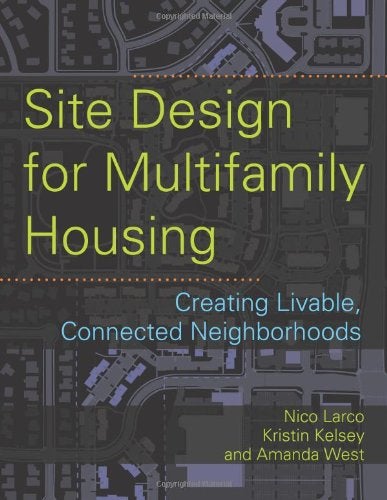Associate Professor Nico Larco has coauthored Site Design for Multifamily Housing: Creating Livable, Connected Neighborhoods, published in April by Island Press.
Aimed at architects, planners, and developers, the book provides design and code guidance for walkability and connectivity in multifamily site design. Larco’s coauthors are UO graduates Kristin Kelsey, ‘MArch ’12, MIArch, ‘12, and Amanda Stocker West, MPA ‘09.
The handbook notes that while the United States is largely urbanized, a large portion of the population still lives in suburban settings characterized by low-density, automobile-dependent development with separated land uses. These disconnected and isolated models of development have been linked to increased greenhouse-gas emissions and reduced quality of life, health, and social connections.

Above: Associate Professor Nico Larco continues to work with colleges and universities interested in developing broad-based, university-wide programs that engage with cities modeled on UO’s pioneering Sustainable City Year Program (SCYP). Photo by Cody Rappaport.
Site Design for Multifamily Housing explains that creating more livable and vital communities is within reach, and that the design and development of multifamily housing — especially the more than 9 million units of multifamily housing that exist in suburbia — is a key component to reaching this goal.
Site Design for Multifamily Housing introduces planners, developers, and designers to ten key elements of multifamily site design, comparing typical and recommended conditions. Case studies of successful large lot multifamily developments as well as retrofit proposals for existing developments with low internal and external connectivity demonstrate how to apply the tools in the book.
The book also draws from built and successful examples from Oregon, California, North Carolina, and Arizona. The ideas and tools in this book, including a planner’s checklist, code guide, and code summaries, will help users to create more livable, vibrant, and healthy developments in their own communities.
Larco also continues his work with colleges and universities interested in developing broad-based, university-wide programs that engage with cities modeled on UO’s pioneering Sustainable City Year Program (SCYP).
Larco serves as codirector of the Sustainable Cities Initiative in addition to his teaching duties in the Department of Architecture. Over the last year, he has held daylong workshops about SCYP at the University of Connecticut, the University of Tennessee, at multiple colleges and universities in Maine, and for the University of Omar Bongo in Gabon. He is currently working on two other books – one titled Sustainable Urban Design and the other titled the Urban Design Studio Handbook.

